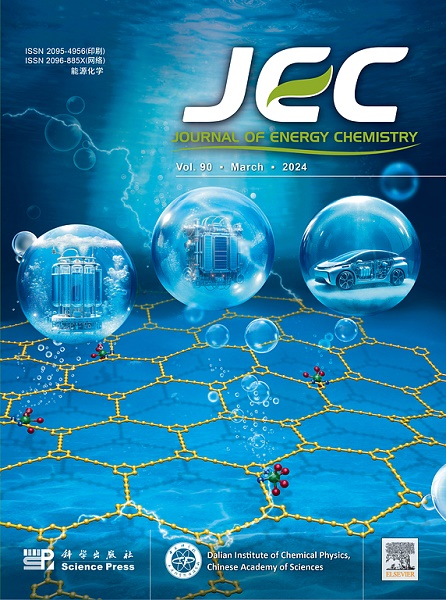Lattice-matched metal/WN catalyst with highly oxygenophilic W sites for hydrogen production in seawater electrolyzer
IF 13.1
1区 化学
Q1 Energy
引用次数: 0
Abstract
Designing efficient and durable hydrogen evolution reaction (HER) catalysts for seawater electrolysis is crucial for large-scale hydrogen production. Here, we introduce a theory-driven design of metal/WN electrocatalysts, with metal strongly coupled to lattice-matched WN. Theoretical calculations for Pt/WN reveal that W sites enhance H2O adsorption/dissociation, optimizing Pt’s H binding. The prepared Pt/WN@CP nanorods can catalyze HER with low overpotentials of 107 and 113 mV at 500 mA cm−2 in alkaline water/seawater, respectively, surpassing Pt/C. Extended calculations and experiments show that the optimized Ni/WN@CP-90 achieves an optimal ΔGH* and overpotential of 219 mV at 500 mA cm−2 in alkaline seawater, demonstrating the versatility of the WN support to promote HER activity. Notably, the anion exchange membrane water electrolyzer (AEMWE) constructed by Pt/WN@CP or Ni/WN@CP-90 with NiFe-LDH@NF demonstrates outstanding hydrogen production activity with excellent Faraday efficiency (∼100%) and durability (120 h), indicating the potential application of WN-supported catalysts for efficient and stable seawater electrolysis.

求助全文
约1分钟内获得全文
求助全文
来源期刊

Journal of Energy Chemistry
CHEMISTRY, APPLIED-CHEMISTRY, PHYSICAL
CiteScore
19.10
自引率
8.40%
发文量
3631
审稿时长
15 days
期刊介绍:
The Journal of Energy Chemistry, the official publication of Science Press and the Dalian Institute of Chemical Physics, Chinese Academy of Sciences, serves as a platform for reporting creative research and innovative applications in energy chemistry. It mainly reports on creative researches and innovative applications of chemical conversions of fossil energy, carbon dioxide, electrochemical energy and hydrogen energy, as well as the conversions of biomass and solar energy related with chemical issues to promote academic exchanges in the field of energy chemistry and to accelerate the exploration, research and development of energy science and technologies.
This journal focuses on original research papers covering various topics within energy chemistry worldwide, including:
Optimized utilization of fossil energy
Hydrogen energy
Conversion and storage of electrochemical energy
Capture, storage, and chemical conversion of carbon dioxide
Materials and nanotechnologies for energy conversion and storage
Chemistry in biomass conversion
Chemistry in the utilization of solar energy
 求助内容:
求助内容: 应助结果提醒方式:
应助结果提醒方式:


